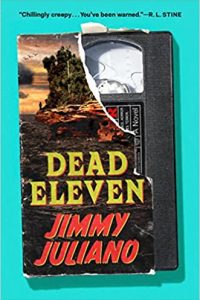Gary K. Wolfe Reviews Novels & Story Cycles and The Illustrated Man, The October Country, Other Stories By Ray Bradbury
 Ray Bradbury: Novels & Story Cycles, Ray Bradbury (Library of America 978-1-59853-700-0, $40.00, 896pp, hc) September 2021.
Ray Bradbury: Novels & Story Cycles, Ray Bradbury (Library of America 978-1-59853-700-0, $40.00, 896pp, hc) September 2021.
Ray Bradbury: The Illustrated Man, The October Country, Other Stories, Ray Bradbury (Library of America 978-1-59853-728-4, $40.00 989pp, hc) October 2022. [Both volumes available as two-volume boxed set The Ray Bradbury Collection (Library of America, 978-1-59853-740-6, $80.00, 1,885pp, boxed set) October 2022.]
No one can complain that they’re having a hard time finding Ray Bradbury stories to read… The exhaustive ISFDB lists more than 30 collections published in the current century alone, including the massive Bradbury Stories from 2003, which managed to assemble no fewer than 100 stories without repeating any of the 100 stories that had already appeared in The Stories of Ray Bradbury way back in 1980. For the more scholarly minded, Jonathan R. Eller, the author of a fascinating three-volume biography of Bradbury, has been editing a multivolume critical edition of The Collected Stories of Ray Bradbury, complete with textual variants, commentary, and related nonfiction, and Volume 3, which appeared in 2017, only gets us up to 1945. So the obvious question is, who really needs the two-volume, 1,800-page Ray Bradbury Collection from the Library of America, also edited by Eller? And the answer, I think, tells us something about the most productive ways in which we can read fiction from the past.
Two important points, one involving the Library of America (for which I’ve edited a few volumes), and the other involving Bradbury. First, the Library of America, despite often being compared to the French Pleiades series of classics, is really less a matter of institutional canonization than of curation; the idea is to present significant works in reasonably accurate annotated editions, not to lecture us on what to read. Second, Bradbury’s legacy isn’t merely a pile of stories lined up like an endless salad bar, but rather a series of collections and novels in a particular sequence, and very much of their time. So the real value of The Ray Bradbury Collection is that we get to read the major Bradbury books as they were read by the original audiences. The first volume, published in 2021, includes The Martian Chronicles, Fahrenheit 451, Dandelion Wine, and Something Wicked This Way Comes, while the second, published in October, features The Illustrated Man, The October Country (complete with Joseph Mugnaini illustrations), and a selection of 27 other stories.
 This provides a much more coherent way of making sense of Bradbury. For example, those wondering why the sentimentalist Bradbury is often cited as an influence in horror fiction can get a clear sense of his darker side from The October Country (still my favorite of Bradbury’s books), or from the rather jaundiced view of childhood in stories from The Illustrated Man (“The Veldt”, “Zero Hour”). A couple of stories in that same collection are set on Mars, but excluded from The Martian Chronicles because they didn’t fit into its overall narrative arc. Still, they make clear that Mars was always for Bradbury a metaphorical space, a way of commenting on racism (“The Other Foot”) or censorship (“The Exiles”, a clear link between the Martian stories and Fahrenheit 451). The 27 stories selected from Bradbury’s many other collections include familiar classics such as “The Pedestrian” and “A Sound of Thunder”, but the latest story dates from 1969, when Bradbury’s influence (if not popularity) had already begun to wane. As always with the Library of America, the end matter and text notes are worth checking out; many who first encountered Bradbury through the popular collections R Is for Rocket and S Is for Space might be interested to learn that the stories were bowdlerized by editors seeking to make them more appropriate for a younger audience. Bit of an ironic fate for the author of Fahrenheit 451.
This provides a much more coherent way of making sense of Bradbury. For example, those wondering why the sentimentalist Bradbury is often cited as an influence in horror fiction can get a clear sense of his darker side from The October Country (still my favorite of Bradbury’s books), or from the rather jaundiced view of childhood in stories from The Illustrated Man (“The Veldt”, “Zero Hour”). A couple of stories in that same collection are set on Mars, but excluded from The Martian Chronicles because they didn’t fit into its overall narrative arc. Still, they make clear that Mars was always for Bradbury a metaphorical space, a way of commenting on racism (“The Other Foot”) or censorship (“The Exiles”, a clear link between the Martian stories and Fahrenheit 451). The 27 stories selected from Bradbury’s many other collections include familiar classics such as “The Pedestrian” and “A Sound of Thunder”, but the latest story dates from 1969, when Bradbury’s influence (if not popularity) had already begun to wane. As always with the Library of America, the end matter and text notes are worth checking out; many who first encountered Bradbury through the popular collections R Is for Rocket and S Is for Space might be interested to learn that the stories were bowdlerized by editors seeking to make them more appropriate for a younger audience. Bit of an ironic fate for the author of Fahrenheit 451.
Gary K. Wolfe is Emeritus Professor of Humanities at Roosevelt University and a reviewer for Locus magazine since 1991. His reviews have been collected in Soundings (BSFA Award 2006; Hugo nominee), Bearings (Hugo nominee 2011), and Sightings (2011), and his Evaporating Genres: Essays on Fantastic Literature (Wesleyan) received the Locus Award in 2012. Earlier books include The Known and the Unknown: The Iconography of Science Fiction (Eaton Award, 1981), Harlan Ellison: The Edge of Forever (with Ellen Weil, 2002), and David Lindsay (1982). For the Library of America, he edited American Science Fiction: Nine Classic Novels of the 1950s in 2012, with a similar set for the 1960s forthcoming. He has received the Pilgrim Award from the Science Fiction Research Association, the Distinguished Scholarship Award from the International Association for the Fantastic in the Arts, and a Special World Fantasy Award for criticism. His 24-lecture series How Great Science Fiction Works appeared from The Great Courses in 2016. He has received six Hugo nominations, two for his reviews collections and four for The Coode Street Podcast, which he has co-hosted with Jonathan Strahan for more than 300 episodes. He lives in Chicago.
This review and more like it in the January 2023 issue of Locus.
 While you are here, please take a moment to support Locus with a one-time or recurring donation. We rely on reader donations to keep the magazine and site going, and would like to keep the site paywall free, but WE NEED YOUR FINANCIAL SUPPORT to continue quality coverage of the science fiction and fantasy field.
While you are here, please take a moment to support Locus with a one-time or recurring donation. We rely on reader donations to keep the magazine and site going, and would like to keep the site paywall free, but WE NEED YOUR FINANCIAL SUPPORT to continue quality coverage of the science fiction and fantasy field.
©Locus Magazine. Copyrighted material may not be republished without permission of LSFF.







